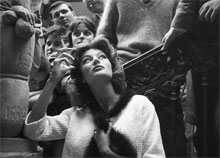Foreword
|
Dear Friends,
Mostra Internazionale del Cinema Libero and Cineteca di Bologna are glad to invite you to the 26th edition of Il Cinema Ritrovato festival, from Saturday June 23rd through Saturday June 30th, 2012. Eight days packed with screenings, conversations, events; four screens running from morning to evening (our two Lumière Theatres, Arlecchino and Jolly Cinemas) and the evening wonder in Piazza Maggiore.
| ||
 | |
(Re)Discovering CinephiliaCinephilia has always been Il Cinema Ritrovato’s magic word, opening doors to rare and unseen images and pleasures. A daily section will be devoted to cinephilia with screenings and conversations focusing on the love of film as a historical phenomenon, an intellectual and sentimental frame of mind, and a spontaneous movement that today is taking on new shapes and capturing the interest of younger generations online through blogs, websites and online magazines. As is our tradition, Il Cinema Ritrovato has invited international film critics and scholars to offer their views on cinephilia in the past and present and how our long-standing amour du cinéma will change in the digital era.
|
|
|
Recovered & RestoredOur annual date with the masterpieces of film history, the best international restoration projects and rediscovered flicks returns again. Among the most anticipated events is the ‘extended version’ of Sergio Leone’s Once Upon a Time in America, restored by the Bologna Cineteca and unveiled at the Cannes Film Festival. The new version features an additional twenty-five minutes of footage that was cut during editing in 1984. The last labor of his career, Leone’s magnificent portrait lights up the screen again with its epic celebration of America and its cinema. And that’s not all: Jean Renoir’s Grand Illusion, his pacifist masterpiece starring Jean Gabin; one of the most stunning and today rarest French Nouvelle Vague films, Jacques Demy’s Lola, with a compelling Anouk Aimée at her most seductive; Les Misérables, a 1930s series of a novel that every generation of filmmakers has taken on; as part of the Rossellini Project a restored version of Journey to Italy, one of the masterpieces of the duo Rossellini/Bergman and a forerunner of modern film. The festival will again feature the work of the World Cinema Foundation, created in 2007 by Martin Scorsese and other contemporary filmmakers for the restoration of cinematic gems from around the world. This year we are happy to present two splendid rediscoveries: the Indian movie Kalpana (1948) by Uday Shankar and the Indonesian After the Curfew (1954) by Usmar Ismail. To celebrate the 10th anniversary of the Film Foundation’s restoration project Avant-Garde Masters, two programmes of experimental films will be screened: from Andy Warhol to the legendary Film with Buster Keaton, Samuel Beckett’s first and only foray into film.
| |
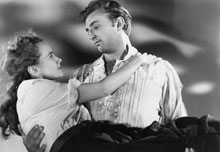 |
The Big Adventure of Raoul Walsh
After our tributes to von Sternberg, Capra, Ford and Hawks, get ready for a new thrill: this year it’s Raoul Walsh (1887-1980), a filmmaker who brought adventure, pure cinema, great entertainment and profound silences to the screen. His films are an ‘inner adventure’, his characters are tormented by a dark past and yet never tired of their search for a place in the world, his virile movies are filled with unforgettable female figures: very few directors have been able to chart such a personal journey within the formulas of Hollywood cinema. Our program includes a selection of Walsh’s silent films as well as some gems of the sound period (with the magnificent 1930s widescreen flick The Big Trail starring a very young John Wayne). Walsh directed Robert Mitchum, Gary Cooper, and Clark Gable in some of their most well-known roles in movies such as Pursued, Distant Drums and Band of Angels: all to be screened in the best versions around today. | |
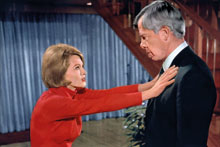 | John BoormanWe are happy to have John Boorman as one of our guests this year. A visionary director known for films such as Deliverance, Hell in the Pacific, Excalibur and Hope and Glory. Born in London in 1933 and part of the New Hollywood generation, Boorman will present his 1967 feature film Point Blank in Piazza Maggiore and will meet with the Il Cinema Ritrovato’s audience after the screening of the documentary about him Me and Me Dad (2012), directed by his daughter Katrine. | |
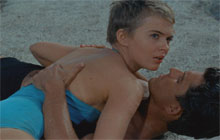 |
Searching for the Colour in Films
Il Cinema Ritrovato continues its journey in pursuit of the original colours of films that have found a second life with digital technology. We will relive the lavish set designs of Cecil B. DeMille’s biblical box-office hit Samson and Delilah, David Lean’s spectacular epic Lawrence of Arabia, the black and white present and the sunny blues of a summer in the Riviera of Otto Preminger’s Bonjour tristesse, and all the colourful marvels of Powell & Pressburger’s war film The Life and Death of Colonel Blimp (presented by Thelma Schoonmaker, Michael Powell’s widow and Scorsese’s legendary editor). Again this year we will continue our search for the colours of silent movies with their bygone yet marvelous qualities: every day there is an opportunity to (re)discover the old techniques on the big screen through shorts and feature films. | |
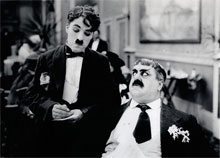 | Musical Silents
| |
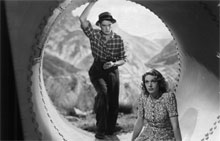 | The Sky is Yours. The Cinema of Jean Grémillon
Jean Grémillon (1901-1959) might be the least known among the great French filmmakers, one of the few artists who was able to explore the meaning of human relationships and their connection with nature and its elements – water, rocks, waves, clay. Grémillon was already a master of the silent film (of which we will show works such as Maldone, starring the great theater actor Charles Dullin, and Gardiens de phare, a drama about man’s struggle against the power of the ocean) before making his signature masterpieces such as Gueule d’amour, Remorques, Lumière d’été, Le Ciel est à vous (all to be screened). Among the most expressive faces of his work is the icon of French film between the world wars, Jean Gabin. | |
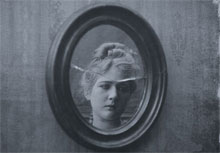 | Lois Weber, the Wizard!Lois Weber (1879-1939) was one of the most renowned directors-screenwriters of American silent film. Il Cinema Ritrovato is presenting the first comprehensive retrospective of Weber’s work with a selection of newly restored and recently discovered films from among the over forty features and one-hundred-plus shorts she wrote, directed and often acted in as well. Weber entered the industry in the 1910s, a time when the presence of women was valued and played an important role. During Weber’s long career spanning three decades, whatever issue she dealt with (poverty, drug addiction, capital punishment, even contraception, marriage, and sexuality), her films consistently featured complex female characters. | |
 | Mrs Hitchcock a.k.a. Alma Reville
Alma Reville, wife of Alfred Hitchcock, was a major influence on his work, but she also had a filmmaking career of her own, both before and after their marriage in 1926. She started as an editor’s assistant and continuity girl and had more professional experience than her future husband when they met in the early 1920s. Alma was assistant director on Hitch’s first solo film, The Pleasure Garden, and he proposed on the boat home from Germany. Alma worked on nearly all of her husband’s films, either credited or more informally. Mrs Hitchcock’s talent can be seen in the films she made with her husband, such as Murder!, and in those she wrote for other directors, such as The Constant Nymph, The First Born, and After the Verdict. | |
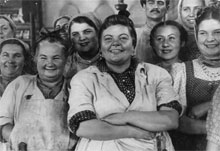 | Ivan Pyr’ev, Mosfilm's Enigma
| |
 | A Hundred Years Ago. Films of 1912
In 2003 the festival began its global search for films from exactly one hundred years ago to screen each year – an experimental project that offers a new history of early cinema, a period as dynamic as it is unknown. From 1912 we are showing several great ‘rediscovered’ gems, from marvelous Italian productions to the fizzy, lighthearted Vitagraph comedies from the States. Mariann Lewinsky will guide us through less well-known films through themes (the double, the mirror), history and politics (colonialism), technology (the Pathé Kok, the first system for making home movies), and by reconstructing the history of production companies (Vitagraph) and directors (Max Mack). | |
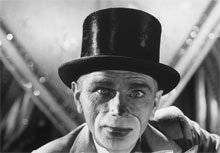 | After th Crash Cinema and the 1929 Crisis
| |
 | Japan Speaks Out! The First Talkies from the Rising Sun
In the United States and Western Europe, the transition to sound was rapid and complete by around 1930. In Japan the process was slower and more gradual: early sound experiments were in progress in the 1920s, but sound films did not prevail until 1936. Silent movies also continued to be made until the outbreak of the Second World War. This retrospective will explore this transitional period, with a particular focus on how Japanese filmmakers used the emerging sound technology. From acknowledged masters such as Kenji Mizoguchi to neglected artists like Yasujiro Shimazu and Sotoji Kimura, filmmakers responded creatively to the challenges and opportunities of sound, producing a rich mixture of part-talkies, documentaries, musicals, and melodramas while experimenting with the possibilities offered by new technology. | |
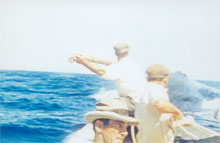 | Unseen Documentary Cinema
| |


